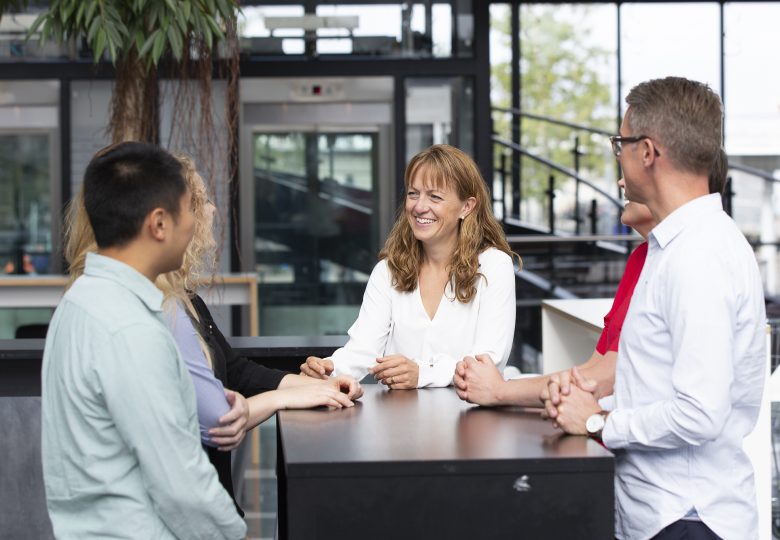How to strengthen well-being in the transition back to the workplace

What worked extra well during the lockdown? And which things are you looking forward to waving goodbye to? Read how you can work with your well-being and work culture right now in the transition from the home office to the common coffee machine at the workplace.
This article was first published at Lederweb. (in Danish only)
It’s like a ketchup bottle you’ve been knocking on for a long time to get the first one out. Suddenly it all comes out. It is the same experience that many managers face when their employees return to the workplace. We have been waiting and hoping for it and now we can be together again.
fds
But something has changed.
fds
A study from Boston Consulting Group shows that the reality will probably be closer that we are, for example, in teams where we take turns being in the office and at home. 65 pct. of the surveyed leaders in the survey expect the near future to offer a hybrid model when it comes to where we carry out our work.
fds
Bring loss and freedom into play
Returning – not to the old as we knew it a year ago – but to a new way of working equals a change. A change where you will experience that some of the habits and routines you had both before the corona and from the time during the lockdown, you must wave goodbye to, and others you will take with you.
Many people have acquired habits that involve greater freedom and the thought that it will change can feel like a loss. Many may have completely forgotten that they need to spend time on transportation again. It can therefore be perceived as a loss of freedom that we now have to spend time on commuting again.
But the new situation also brings new opportunities. You get an opportunity and a responsibility to choose which habits you take with you back to the workplace. And which things you do not want to bring forward. Can some of what worked well while working at home fit into the new way you are going to work together?
For example, it can be a challenge to hold meetings with some participate online while others sit in the room. Here, you need to consider whether it is a walkable model.
You can embrace things you have lost, to say goodbye to them or to take them into a new context. But it is your own active choice. Therein lies your freedom.
fds
3 questions to start by asking yourself
To work with well-being with your team, you can start by asking yourself three questions:
- What are you looking forward to no longer having to do?
- What do you choose to take with you when you are together again or working in a hybrid?
- How will your team be able to look at you, that you thrive on your way of working?
fds
Well-being, it’s something you create together – but how?
Well-being can be a difficult discipline. What gives you a high level of well-being does not necessarily help to increase the well-being of your employees.
According to Den Store Danske, “Well-being (s) is an expression of a well-being that gives the individual the feeling of profit, drive, drive and joy in life.”
It testifies that well-being is a broad concept that can affect the well-being of the individual to a greater or lesser degree. In the same way, the good job satisfaction can also be created by several different parameters, such as:
Co-determination, mastery, leadership, balance, meaning, results and colleagues.
When taking a chat with both the individual and the team, the above elements can be good to listen for. Where do your employees experience that there may be a loss and where is it going well?
fds
3 questions for employees
Ask the same questions to both the individual employee and the team:
- When do you experience thriving?
- What efforts can most easily be made to increase well-being?
- How can others best see that you are thriving?
Read more about Coaching, Team Coaching and working with values in the organisation.